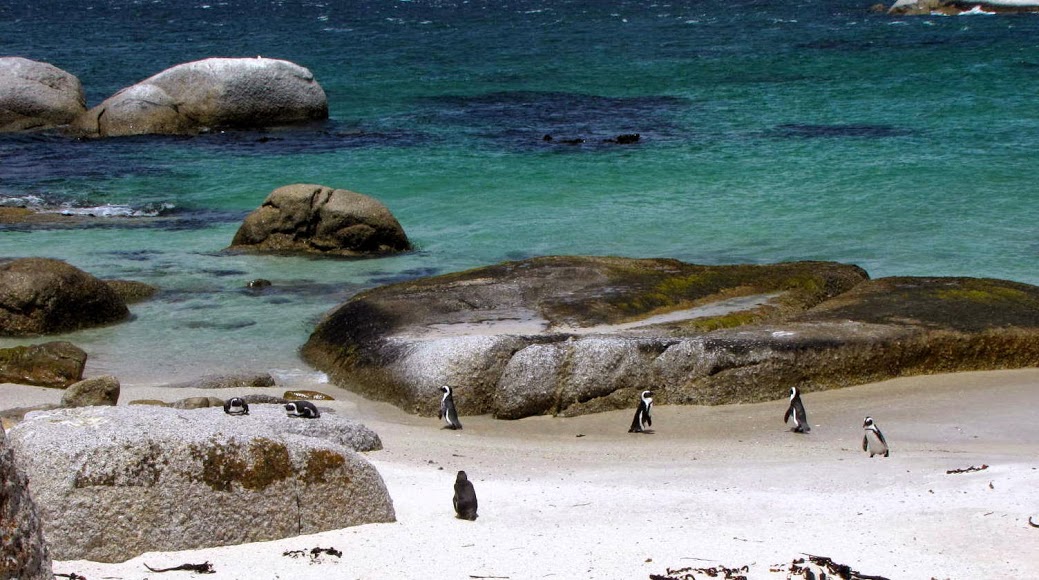Page 3 of 7
Re: African Penguin - Bird of the Month April 2015
Posted: Fri Apr 10, 2015 1:32 pm
by Flutterby
Very interesting and great pics.

Re: African Penguin - Bird of the Month April 2015
Posted: Sat Apr 11, 2015 5:11 pm
by ExFmem
nan wrote:I post a second time this one......
please be carefull with my "pachmina"

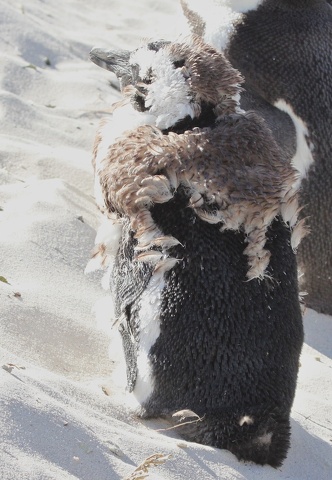
Thanks all! nan, the next entry will pertain to your fancily attired penquin with its "mink stole".

Re: African Penguin - Bird of the Month April 2015
Posted: Sat Apr 11, 2015 5:13 pm
by ExFmem
Life Cycle
African penguins usually produce one to two eggs per clutch and incubation lasts 38–41 days. Responsibility to incubate the eggs is shared equally between both sexes. When one parent is incubating the egg, the other will head out to sea to forage or head out to collect vegetative nesting material. Each parent has an incubation ‘pouch’ located on the body to keep the incubation temperature constant.
Eggs do not hatch at the same time (asynchronous hatching) and usually hatch about two days apart. The chicks are brooded for the first 15 days after which the chick attains control over its body temperature. The parents safeguard the chicks for the first 30 days, after which they are mostly left unguarded. The unguarded chicks may form crèches of up to 55 chicks. Chicks are dependent on their parents for food, which is fed by direct beak-to-beak regurgitation, and they only become independent of parental care three months after hatching.
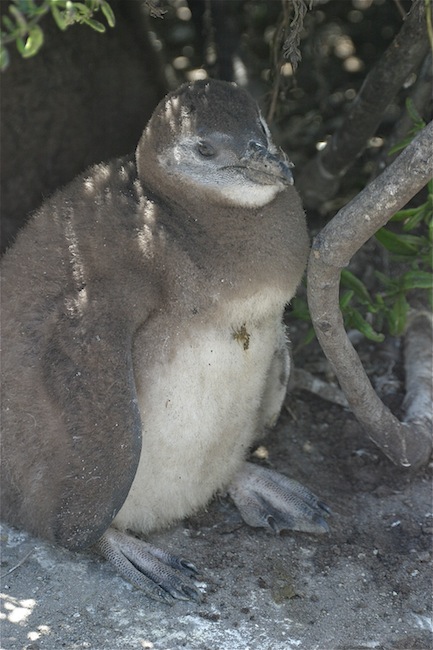
The first moult occurs after 14 days followed by a second moult at 40–60 days, and juvenile plumage develops at 70–80 days. The chicks are fully fledged after 70–90 days. The fledgling juveniles will go out to sea on their own and return to their colony of birth after about 12– 22 months to moult into their adult plumage. The age at first reproduction ranges between four and six years and life expectancy is up to 27 years in the wild.
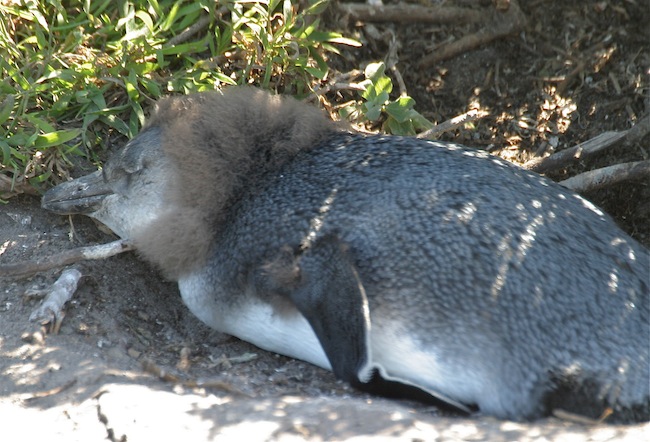
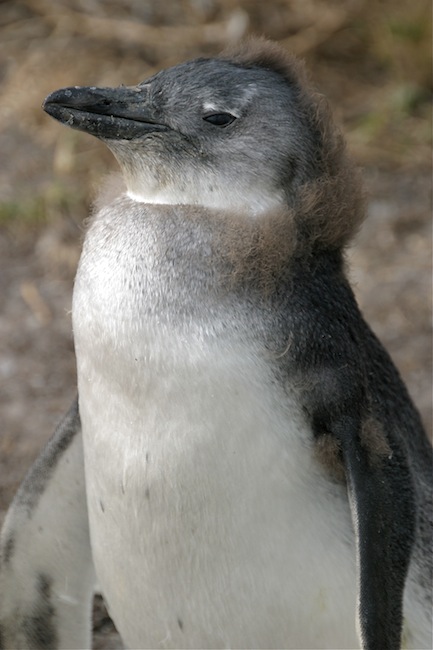
Moulting in birds is energetically expensive and African penguins have developed a moulting strategy that replaces all their feathers in a relatively short period of time in comparison to other birds. Moulting is essential for ensuring that penguins remain waterproof and insulated in cold water. During the pre-moulting phase, penguins will go out to sea to fatten themselves for the moulting period.
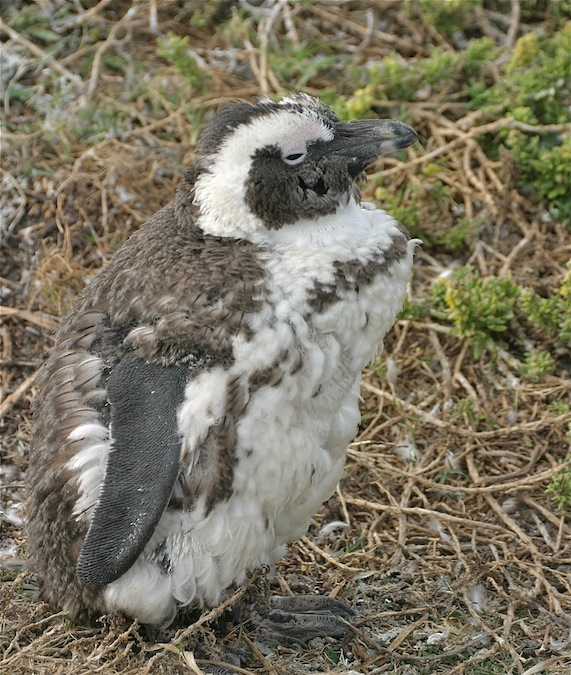
Pre moulting adults accumulate fat reserves needed during the moulting period by spending five weeks prior to moulting feeding to gain up to 31% of their normal body weight. During moulting penguins are unable to forage because their feathers are not yet waterproof and they therefore do not feed for about 18 days. After moulting, the penguins will head out to sea in their new feathers and spend about six weeks replacing the fat reserves (around 41% body weight) lost during the moulting period before the onset of the breeding season.
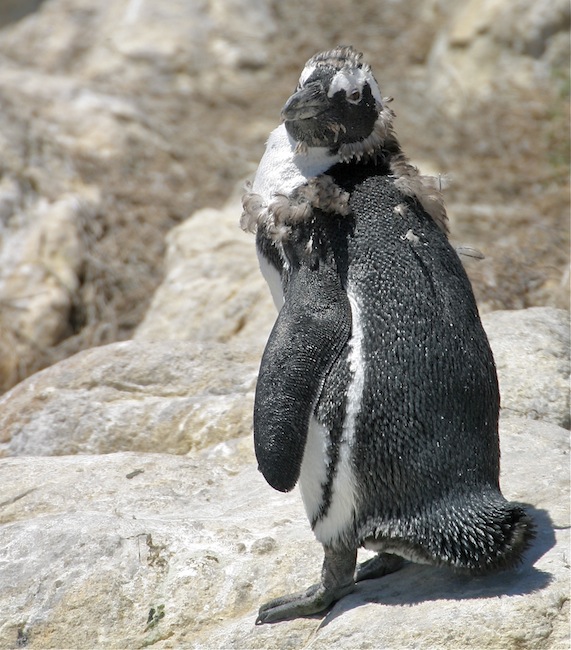
Re: African Penguin - Bird of the Month April 2015
Posted: Sat Apr 11, 2015 6:51 pm
by nan
Re: African Penguin - Bird of the Month April 2015
Posted: Sat Apr 11, 2015 9:12 pm
by Toko
Moulting eats up a lot of energy, but that's the cost of you want to have a fancy outfit as a teenager

Your photos are too crazy, ExFmem

Re: African Penguin - Bird of the Month April 2015
Posted: Mon Apr 13, 2015 4:40 pm
by Flutterby
Lovely pics!

Re: African Penguin - Bird of the Month April 2015
Posted: Mon Apr 20, 2015 1:39 pm
by Toko
Re: African Penguin - Bird of the Month April 2015
Posted: Mon Apr 20, 2015 2:18 pm
by Lisbeth
Better than baboons!

Re: African Penguin - Bird of the Month April 2015
Posted: Mon Apr 20, 2015 2:23 pm
by BluTuna
Lisbeth wrote:Better than baboons!

Anything is better than Boons!
Re: African Penguin - Bird of the Month April 2015
Posted: Mon Apr 20, 2015 3:32 pm
by Lisbeth
Saturday on the beach
